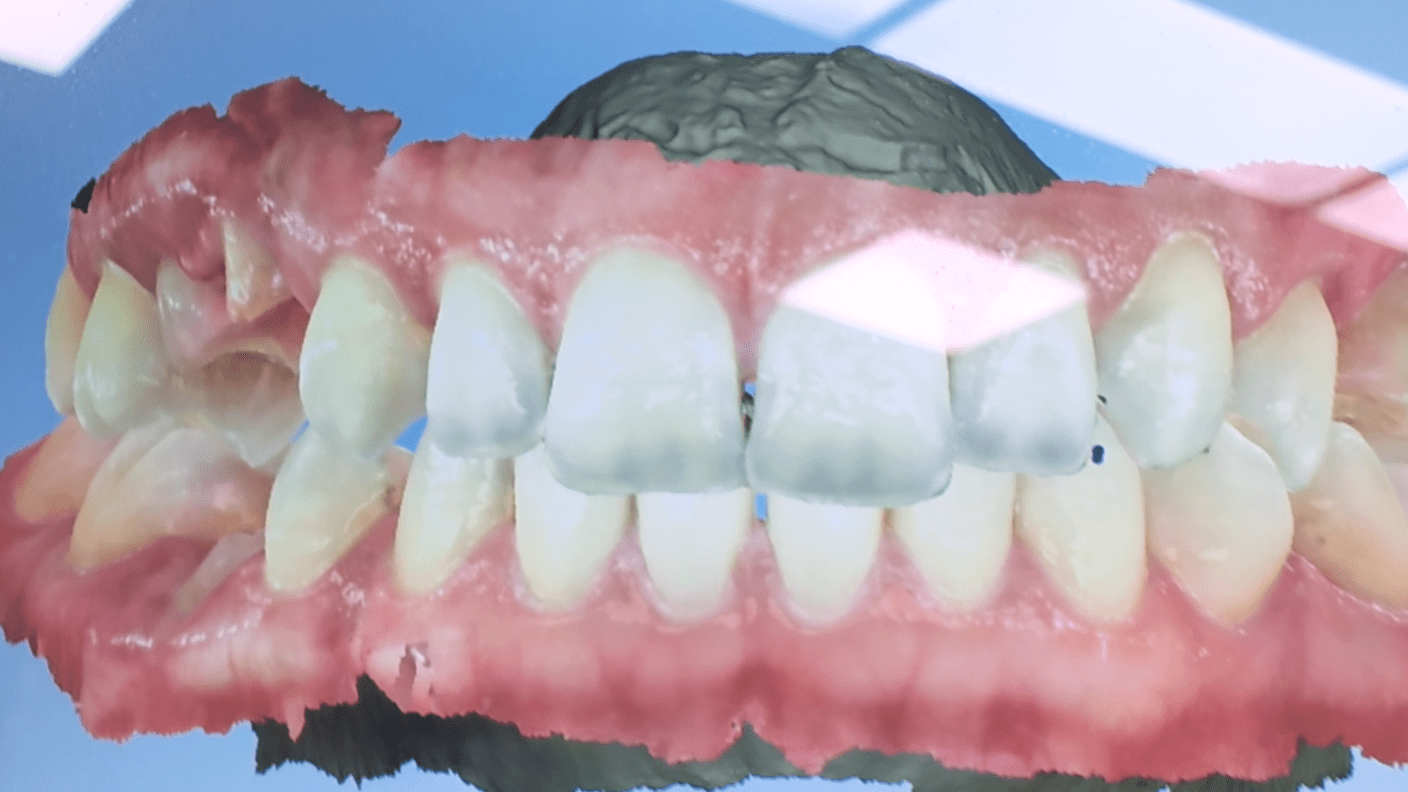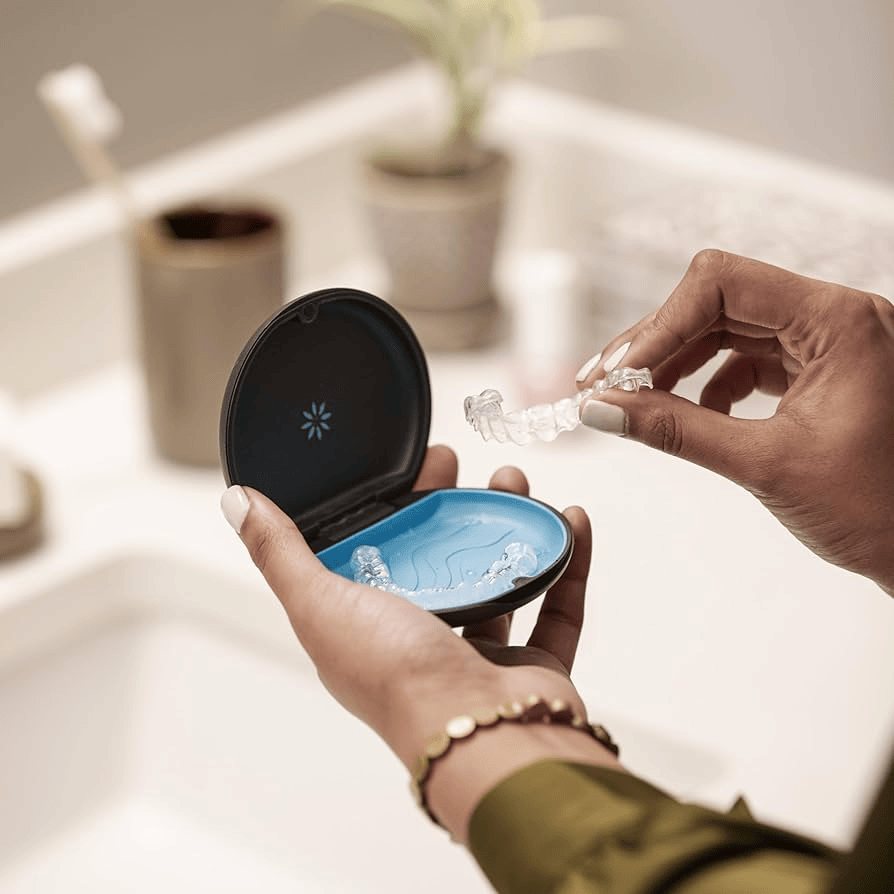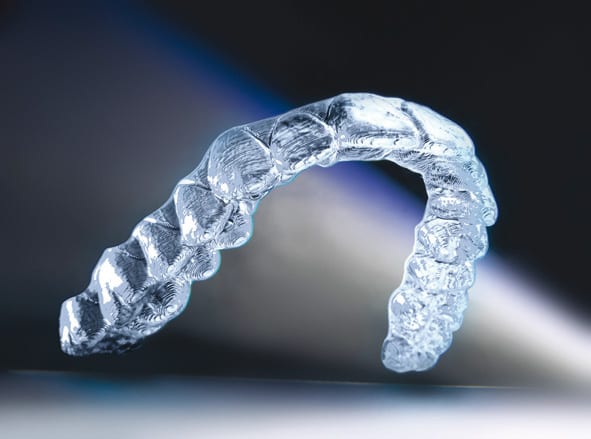Invisalign treatment is one of the most comfortable options available for straightening teeth—especially when compared to traditional braces. But since Invisalign aligners gradually shift your teeth into better alignment, it’s common to experience some discomfort or mild pain, particularly when starting a new set of aligners.
If you’ve been wondering does Invisalign hurt? or how does Invisalign work? to straighten teeth, this guide will walk you through everything you need to know about Invisalign discomfort—and how to manage it.
Table of contents
Understanding Invisalign Discomfort and Pain
Why do Invisalign aligners cause discomfort?
When you insert a new set of Invisalign aligners, they apply gentle but consistent pressure to move your teeth. This is a normal part of the Invisalign treatment process and a sign that your aligners are working. The tight feeling or mild soreness, especially during the first couple of days with a new tray, happens because your teeth, gums, and supporting structures are adapting to the shift. Invisalign aligners are made from Align Technology’s advanced SmartTrack™ material, designed to move teeth efficiently while staying comfortable—but some tightness is inevitable with any aligner-based treatment.
Common reasons for Invisalign discomfort include:
Initial pressure when starting a new aligner
Soreness as teeth begin to shift
Irritation from Invisalign attachments or rough edges
Mild gum sensitivity due to aligner fit
Tips to Minimize Invisalign Discomfort
How can I reduce pain from Invisalign aligners?
Most patients experience only minor discomfort with Invisalign aligners, and there are many ways to manage it. Over-the-counter pain relievers like ibuprofen can help with general soreness. Switching to a new set of aligners at night lets your mouth adjust while you sleep. Using Invisalign chewies or Movemints can ease tension and improve aligner fit, while sipping cool water may soothe sore gums. And always follow your Invisalign orthodontist’s instructions for switching aligners and wearing them for 20–22 hours a day—this keeps your progress on track and prevents unnecessary pain.

Home remedies for Invisalign soreness
If you’re experiencing discomfort, don’t worry—there are plenty of safe ways to find relief at home. You can apply a cold compress to the outside of your mouth or gently suck on ice chips (without aligners in) to numb soreness. If your Invisalign aligners have rough edges, gently smoothing them with an emery board or using orthodontic wax can prevent gum irritation. Remember: drinking hot or cold beverages can provide relief, but always remove your aligners first—never drink anything but water while wearing them.

How Long Does Invisalign Pain Last?
In most cases, Invisalign discomfort is temporary. You’ll likely feel soreness or tightness for the first 1–3 days when you switch to a new aligner, but this fades as your mouth adjusts. The more consistently you wear your Invisalign aligners, the quicker your teeth adapt to the pressure. For most patients, mild discomfort becomes a predictable part of treatment—and many report that Invisalign is far less painful than braces for teeth. If significant pain persists beyond a few days, or if your aligners feel improperly fitted, contact your Invisalign provider near me for an adjustment.
Managing soreness with simple remedies
Using a combination of over-the-counter pain relief, cold therapy, and proper Invisalign hygiene helps minimize discomfort. Clean your aligners daily using the Invisalign aligner cleaning system or cleaning crystals Invisalign recommends, as buildup can irritate gums. Stick to soft foods during the first day or two of wearing a new tray, and use chewies or Movemints to adjust fit and relieve tension. As your Invisalign treatment progresses, your mouth will become more accustomed to the aligners.
Invisalign pain changes through treatment
During the first few aligner sets, your teeth and gums may be more sensitive to pressure, making initial soreness more pronounced. However, as your mouth adapts to the gentle, consistent movement of the aligners, discomfort typically decreases with each tray. By maintaining good oral hygiene, cleaning your Invisalign aligners properly, and using comfort aids when needed, you can ensure that any discomfort remains manageable throughout your entire Invisalign journey.

Do Invisalign Attachments Cause Pain?
What are Invisalign attachments, and do they hurt?
Invisalign attachments—also called SmartForce attachments—are small, tooth-colored shapes bonded to certain teeth to help your aligners grip and move them more effectively. These attachments are key for correcting complex tooth movements. When attachments are first applied, you may experience some soreness or sensitivity in your gums or cheeks as your mouth adjusts. This is normal and typically resolves within a few days. If any attachment continues to irritate the inside of your mouth, your Invisalign orthodontist may recommend using orthodontic wax for added comfort.
How can I ease discomfort from Invisalign attachments?
Most Invisalign attachments cause only mild, short-lived soreness. You can manage this with ibuprofen or acetaminophen as needed. If the attachment is rubbing against your cheek or gum, applying orthodontic wax over it can provide relief while your mouth adjusts. Be diligent about cleaning both your teeth and your aligners—use a clear aligner cleaning system or cleaning crystals Invisalign recommends to prevent buildup. The good news: as your treatment progresses, you’ll quickly get used to having attachments, and they won’t interfere with daily life.
Are There Common Side Effects with Invisalign Treatment?
What should I expect beyond soreness?
While Invisalign treatment is designed to be gentle and comfortable, there are a few minor side effects you may experience—especially during the first few weeks. In addition to the tight feeling of a new tray, some patients report temporary speech changes, such as a slight lisp, which usually disappears as your tongue adapts to the Invisalign aligners. You might also notice increased saliva production or occasional dry mouth. These side effects are common with clear aligners for teeth and generally fade quickly.
Potential short-term side effects include:
- Temporary speech changes (lisp)
- Increased saliva or occasional dry mouth
- Mild gum sensitivity
- Lip or cheek irritation from new aligners
- Tension headaches from initial tooth movement
Does Invisalign Get More Comfortable Over Time?
Yes—Invisalign aligners tend to become more comfortable as treatment progresses. Your teeth, gums, and mouth gradually adapt to the sensation of wearing aligners. Many patients find that the first few sets of trays cause the most noticeable discomfort, but subsequent trays feel easier to wear. Properly using your Invisalign cleaner and maintaining excellent oral hygiene will also help ensure a more comfortable experience throughout your Invisalign journey.
What If Invisalign Pain Persists or Worsens?
While mild discomfort is normal, severe or persistent pain is not. If you experience sharp pain, excessive gum bleeding, or worsening discomfort that doesn’t improve after the first few days of a new aligner set, contact your Invisalign provider near me. Your Invisalign orthodontist may need to make adjustments or evaluate for issues such as poorly fitting aligners or tooth/root complications. Never try to modify your aligners on your own—leave adjustments to your professional provider.
When to contact your Invisalign orthodontist:
- Severe or worsening pain
- Excessive gum bleeding or irritation
- Aligners that don’t fit properly
- Attachments causing consistent tissue damage
Is Invisalign Pain Different from Braces Pain?
Yes—Invisalign pain is generally milder and more manageable than the discomfort associated with traditional braces. Invisalign aligners apply consistent, gentle pressure to straighten teeth without the sharp brackets and wires that can irritate gums and soft tissue in braces for teeth. Most Invisalign treatment soreness is temporary, occurring when switching to a new set of aligners, and typically resolves within a few days. In contrast, braces often cause prolonged soreness after wire adjustments. With Invisalign aligners, patients also avoid emergency visits for broken brackets or poking wires, making the overall experience far more comfortable and predictable.
Invisalign vs braces—what’s more comfortable?
In general, Invisalign aligners are much more comfortable than traditional braces for teeth. With braces vs Invisalign, metal brackets and wires can cause significant gum, lip, and cheek irritation—something you won’t experience with clear aligners. You’ll also avoid painful tightening appointments with Invisalign, since the aligners gradually guide your teeth through gentle, continuous pressure. Many Invisalign reviews praise the comfort of Invisalign clear braces over metal braces.
Key Invisalign comfort advantages over braces:
No metal brackets or wires causing irritation
No painful wire tightening
Less gum and cheek soreness
More gradual and predictable tooth movement
Are there ways to make Invisalign even more comfortable?
Absolutely—many Invisalign for teens and adult patients benefit from using Invisalign Chewies or Movemints to help improve tray fit and relieve tension. Cold compresses and mild pain relievers help ease discomfort when starting new aligners. Keeping your aligners clean with an Invisalign aligner cleaning system or cleaning crystals Invisalign recommends prevents irritation from plaque buildup. And finally, following your orthodontist’s guidance for aligner wear and tray changes ensures the smoothest possible experience.
Comfort tips for smoother Invisalign treatment:
Use Invisalign Chewies or Movemints to improve fit
Apply cold compresses for soreness relief
Clean aligners daily with Invisalign cleaning crystals
Follow orthodontist’s wear and tray change instructions
How do you relieve clear aligner pain?
One effective way to relieve clear aligner pain is by using cold compresses on the outside of your cheeks. Just as ice can reduce swelling and numb a sore muscle, applying a cold pack helps numb the areas around your teeth and gums, easing discomfort caused by the pressure of new aligners. A few minutes at a time can bring quick relief and help manage inflammation.
How do I stop my Invisalign from hurting?
To manage Invisalign pain, a combination of simple home remedies can help. Applying cold compresses, taking over-the-counter pain relievers, and using orthodontic wax to cover sharp edges are common methods. Many patients also find relief by chewing on Invisalign chewies to improve tray fit and ease pressure. Rinsing with warm salt water, using topical numbing gels, and choosing soft foods instead of hard or crunchy ones can also reduce discomfort during treatment.
How do you reduce pain with Invisalign?
Invisalign-related jaw pain and general discomfort can often be reduced with consistent care. Over-the-counter medications, warm or cold compresses, and gentle jaw exercises can ease muscle tension caused by clear aligners. Maintaining good oral hygiene and attending regular orthodontic checkups also helps prevent complications that can lead to pain. Most importantly, following your prescribed Invisalign treatment plan ensures that aligners are changed on schedule, which can reduce unnecessary discomfort.
Does Orajel work for Invisalign pain?
Yes, oral anesthetics like Orajel and Anbesol can be helpful for managing localized Invisalign pain. These topical gels temporarily numb the gums and soft tissues affected by aligner pressure or irritation, providing quick relief. While they won’t address the overall movement-related discomfort, they are particularly effective for soothing sore spots inside the mouth during the first few days of wearing a new set of Invisalign aligners.
Conclusion
While Invisalign treatment is not entirely pain-free, it offers a far more comfortable experience compared to traditional braces or Invisalign alternatives. Mild discomfort is normal as your teeth align, but it’s temporary—and a sign that your treatment is progressing. With proper care, the right Invisalign provider, and a few simple comfort tips, you can keep your Invisalign experience as smooth as possible. If you’re considering Invisalign, consult with a trusted Invisalign orthodontist near me to start your journey toward a straighter, healthier smile—with confidence and comfort.






